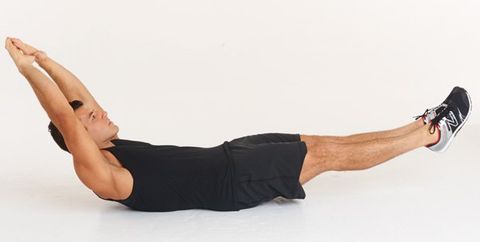Everyone has different goals when it comes to working out. Some aim to gain muscle, others look to lose weight, and some want to build strength and endurance. Isometric exercises are great for the latter and are super common in more static routines like yoga. Below, a fitness expert explains how they work, the benefits, and offers a few isometric exercise examples that you can try during your next gym session.
What are isometric exercises?
“An isometric exercise is a static exercise where you hold a muscular contraction without movement, as opposed to a dynamic exercise where the muscles are able to contract from their longest to their shortest lengths—think a plank versus a bicep curl,” says Andrew Slane, a sports conditioning specialist and Fiture fitness instructor. It’s really that simple.
Isometric exercise benefits
Although they won’t necessarily help your muscles bulk up, isometric exercises improve strength and stability, which in turn, can fine-tune the form, efficiency, and ultimately the results of dynamic exercises in your routine, Slane says.
“For example, maybe your knees get a little wobbly at the bottom of a squat,” Slane says. “Once we correct the form, we can hold the lowest position of the squat in an isometric hold to strengthen that portion of the movement, fixing the overall execution of the exercise, and successfully setting us up for progressions like adding weights.”
Slane adds that isometrics can also be therapeutic for those with arthritis because they don’t require joints’ full range of motion and, therefore, can help maintain fitness without causing pain that more mobile dynamic exercises can bring. “They can also allow you to strengthen and stabilize the muscles around injured joints, helping with recovery,” Slane adds, with the approval of a doctor, of course.
Isometric exercise examples
Whether you’re looking to modify some moves to better accommodate your body, or you simply want to improve your endurance, here are a few basic isometric exercises Slane recommends trying out.
Wall sits
“Squat like you’re sitting in an invisible chair with your back against a wall. Make sure that your knees stay tracking over your shins and ankles, keeping them at a 90-degree angle, while maintaining a straight line from your head to your tailbone,” Slane explains. “Hold for around 30 seconds.”
Planks
“While on your belly, lift your body off the floor using your elbows and toes—imagine you’re going to do a push-up using your forearms instead of your hands,” says Slane. “Maintain a straight line from your head to toes, making sure to squeeze your glutes to keep your butt down in line with the rest of your body.” Check that your shoulders are aligned over your elbows and your core is tight, “like someone has sewn your belly button in,” Slane adds. “Hold for around 30 seconds at a time, trying to avoid allowing your back to sway.”
Hollow body holds
“Lay flat on the ground with your arms extended up overhead. Raise your legs and arms and shoulders off of the floor, maintaining only your lower back on the ground and hold for about 30 seconds. During execution, your body should resemble a canoe, or a half-moon, while holding,” Slane explains.
Isometric exercise risks
Overall, diversifying your exercise routine is rarely a bad thing. And, as noted, isometrics can even make fitness more accessible and less painful for some. With that said, they do increase blood pressure during the actual exercise, Slane says. So it’s important to consult a medical professional if you have existing blood pressure concerns.
But, overall, the exercises can help lower blood pressure. “However, studies have shown that they can be beneficial for lowering resting blood pressure,” he adds. “So, individuals with hypertension or heart disease should consult their doctor prior to adding these exercises to their regimen.”
He adds that, as with any exercise, it’s important to maintain proper form and alignment “to minimize stress on the joints.”
Kayla Blanton is a freelance writer who reports on all things health and nutrition for Men’s Health, Women’s Health, and Prevention. Her hobbies include perpetual coffee sipping and pretending to be a Chopped contestant while cooking.




